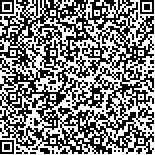下载中心
优秀审稿专家
优秀论文
相关链接
摘要

在光学遥感中,水的强烈镜面反射性和角度选择性使探测器饱和或反射率过低而难以提取有效信息,雪的强反射性和表面敏感性使传感器难以直接探测,植被指数在不同反射强度下的敏感性对经典植被监测方法的精度和有效性提出挑战。偏振手段可大大提高水、雪和植被的遥感识别能力。本文利用地物遥感偏振光效应的高信息—背景反差比滤波特性,解决光学遥感中水、雪的不可测量问题,以及破除植被强光反射条件下无法精细监测的瓶颈。本文从偏振高信息—背景反差比滤波特性理论出发,通过实验证明偏振手段可有效提升水的信息—背景反差比、剥离70%以上的太阳耀光,为强反射特性下的积雪遥感提供必要方法,并最高降低78%的植被监测误差。本文首次推导证明了偏振探测高信息—背景反差比滤波特性机理,在理论指导和实验深化引导下解决了光学遥感中水、雪因探测器饱和而无法测量的问题,并破除了强反射条件下植被无法精细监测的瓶颈。
In optical remote sensing, the strong specular reflectivity and angle selectivity of water lead to detector saturation or to very low reflectivity for extracting effective information. The strong reflection characteristics and surface sensitivity of the snow limit the capability of the sensor to detect directly. Thus, water and snow are problems of passive remote sensing. The sensitivity of vegetation index under different reflection intensities in high-resolution quantitative remote sensing also challenges the accuracy and effectiveness of classical vegetation monitoring methods. This study aims to solve the bottleneck of water and snow that cannot be measured by optical remote sensing. This study uses the fourth law of remote sensing polarization effect, that is, high information-background ratio filtering characteristics. The polarization information can be obtained by adding the polarizer to the sensor in any direction. The Fessenkov method can be used to calculate the Degree Of Polarization (DOP) according to the data of different polarization angles and thus provide a new solution to the abovementioned remote sensing problems. The polarizing method can effectively enhance the information of the water-background ratio, which strips more than 70% of the glitter, provides the necessary method for the remote sensing of snow, and reduce up to 78% of error in vegetation monitoring. The mechanism of high-information-background ratio filtering is proved for the first time. Under the theoretical guidance and deepening of the experiment, the problems that water and snow can hardly be measured, and the bottleneck that vegetation cannot be accurately measured under strong reflection are solved.

